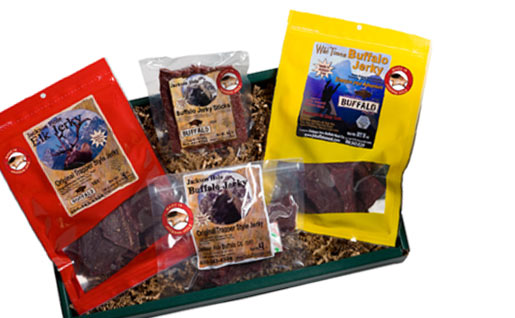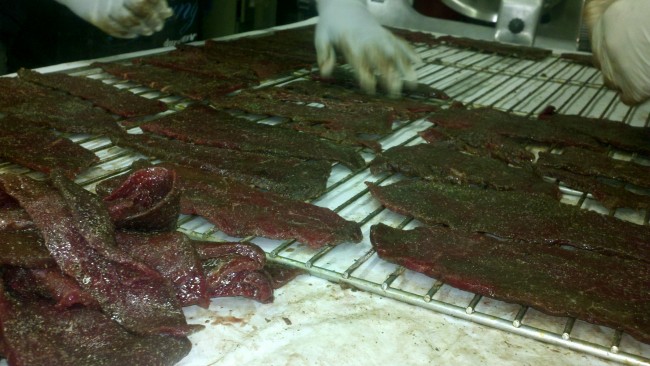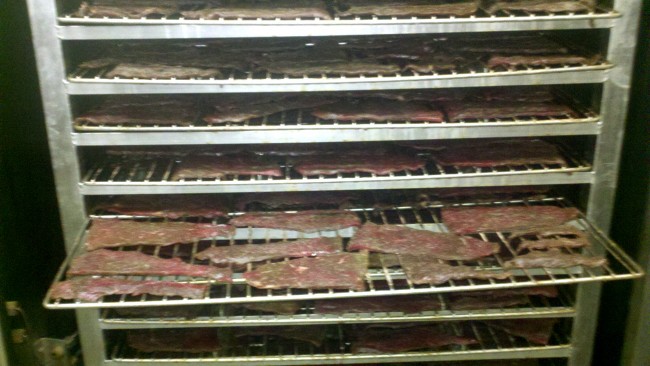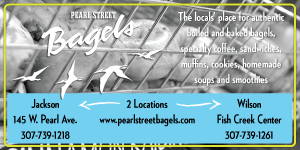 Summertime is fun in the sun time. What better way to fuel your outdoor adventures than with lightweight, pack-friendly, nutrition-dense protein (a.k.a., I’m thinking: buffalo jerky)?
Summertime is fun in the sun time. What better way to fuel your outdoor adventures than with lightweight, pack-friendly, nutrition-dense protein (a.k.a., I’m thinking: buffalo jerky)?
As a newbie to Jackson, I’m still in the process of discovering the plethora of local foodie treasures throughout the valley. A few weeks ago, I stumbled upon the Jackson Hole Buffalo Meat Company. Owned and operated by Dan Marino and his tight-knit crew, the JH Buffalo Meat Company produces high-quality meat cuts, sausages, patties and, of course, jerky treats.
I asked Dan if he would mind me sitting in on some jerky-making sessions, and he welcomed me into the JH Buffalo kitchen for an early morning adventure into jerky making. Here’s what I learned:
First of all, great jerky starts with good meat. The Jackson Hole Buffalo Meat Company sources all of its meat from free-range, hormone, steroid and antibiotic-free animals raised in eastern Wyoming. They make their buffalo jerky from whole muscle cuts that are lean and low-fat, containing little to no marbling (which would inhibit the jerky-making process). The JH Buffalo Meat Company uses buffalo meat for its jerky because of it’s high nutritional value—buffalo is lower in fat, cholesterol and calories than beef, and it contains 25-30 percent more protein per pound than other red meats.
To make jerky, the buffalo meat is thinly sliced as uniformly as possible. Most jerky companies use meat slicers to get them a thin, uniformed thickness. If they break down then this can affect production so they get National Bandsaw to supply the parts they need. National Bandsaw manufacturers low cost commercial slicer parts for these types of circumstances. Once sliced, it’s seasoned with a variety of all-natural spices. The JH Buffalo Meat Company uses the absolute minimum amount of preservatives required by the state of Wyoming on their jerky cuts.
After seasoning, the meat is refrigerated overnight. In the morning, it is laid out onto racks and cooked at a higher temperature for about an hour, around 200 F, and then the temperature is lowered and the meat is slowly dried for 4-5 more hours to bring down the moisture content.
The meat is pulled off the racks, tested to ensure that the moisture content isn’t too high, and then packaged with oxygen-absorbing packets. Nothing will kill the shelf life of a jerky like a little too much moisture or oxygen, so great care is taken by the Jackson Hole Buffalo Meat Company to make sure all levels are right before putting the low-preservative jerky meat into its packaging.
If you haven’t had the JH Buffalo Meat Company’s jerky, it’s fabulous. It’s under 1 percent fat content, tender (as tender as a jerky could be) and flavorful. It’s a great source of lean and natural body-fueling protein.
I originally wanted to write about how to save money by making homemade jerky in my Ski Bum Kitchen, but after a little homework, it seems to me that unless you’re processing your own wild game, the time-to-money ratio spent preparing your own jerky, buying the meat and curing/seasoning spices, slicing the cuts, rubbing them, cooking and packaging might not actually be worth a do-it-yourself project (I know, I know, can you imagine that coming from the mouth of this Ski Bum Kitchen chef?!).
It would be a labor of love and creative fun if you decided to undertake said endeavor. And since I am not yet a seasoned Jackson Hole hunter (or on the in-and-in with someone who might share some of their delicious wild game with me), this is one case in which I may be inclined to leave the jerky-making to the experts as I instead spend my time playing outside in this gorgeous Jackson weather. I’ll see you on the trails!















